The Central Bulge Of Our Milky Way Galaxy Rises Above A Sea Of Clouds In This Ethereal Scene. An Echo

The central bulge of our Milky Way Galaxy rises above a sea of clouds in this ethereal scene. An echo of the Milky Way’s dark dust lanes, the volcanic peak in foreground silhouette is on France’s Réunion Island in the southern Indian Ocean. Photo by Luc Perrot.
More Posts from Night-hides-the-world and Others




As promised, here is a comic about the brightest star in the northern Hemisphere: Sirius! Sirius B will be shown in future comics as 2018 is year of the dog and since Sirius is the dog star, it is year of the Sirius!
Enjoy!
https://www.space.com/21702-sirius-brightest-star.html
This shows the development of imagery we have for nebulae!
Enchanted Moon II by Nima Shayesteh
Wolf Moon by miguel aviles - Art of Visuals Collective
Moon on the horizon, Santa Barbara | California (by A. Klioutchnikov)
And unfortunately I can’t find credit for the final photo.




With October just around the corner, NASA has released its latest Galaxy of Horrors posters. Presented in the style of vintage horror movie advertisements. As fun and creative as all three posters are, they're based on real phenomena. 🎃
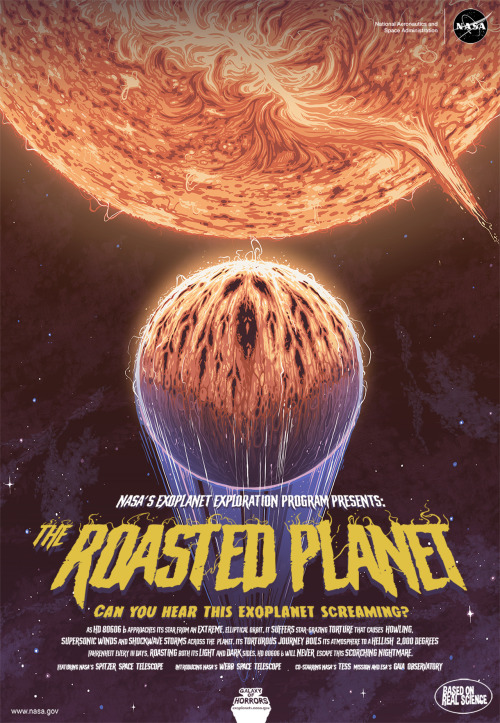
Can you hear this exoplanet screaming?
As HD 80606 b approaches its star from an extreme, elliptical orbit, it suffers star-grazing torture that causes howling, supersonic winds and shockwave storms across the planet. Its torturous journey boils its atmosphere to a hellish 2,000 degrees Fahrenheit every 111 days, roasting both its light and dark sides. HD 80606b will never escape this scorching nightmare.
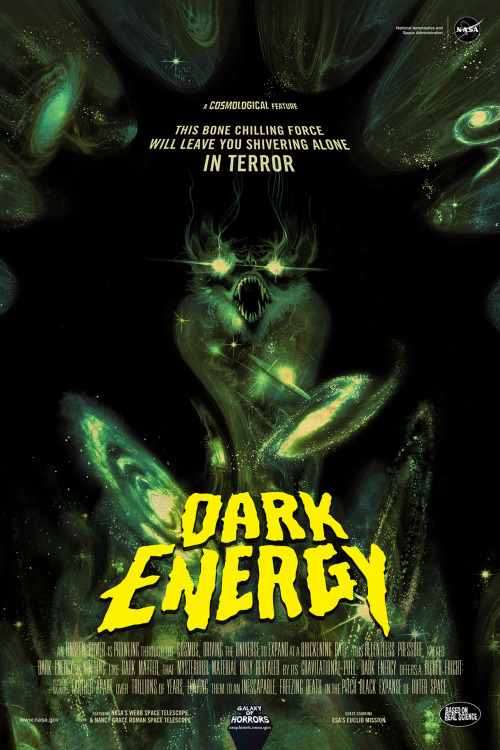
This bone-chilling force will leave you shivering alone in terror!
An unseen power is prowling throughout the cosmos, driving the universe to expand at a quickening rate. This relentless pressure, called dark energy, is nothing like dark matter, that mysterious material only revealed by its gravitational pull. Dark energy offers a bigger fright: pushing galaxies farther apart over trillions of years, leaving the universe to an inescapable, freezing death in the pitch black expanse of outer space.
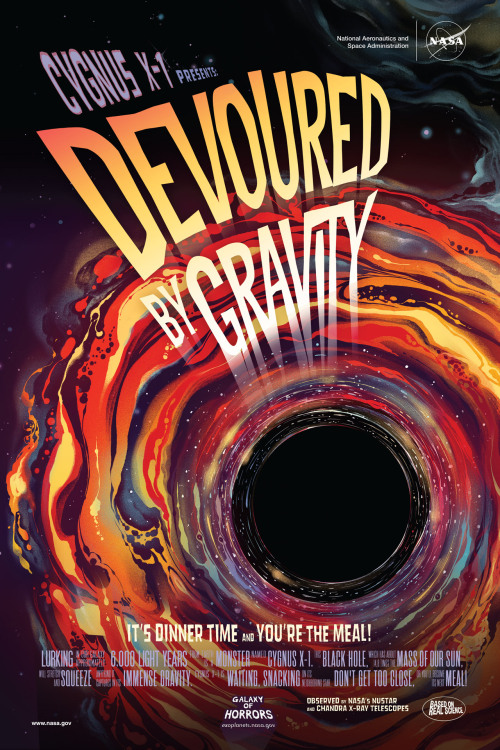
Cygnus X-1 Presents:
It’s Dinner Time and You’re The Meal!
Lurking in our galaxy, approximately 6,000 light-years from Earth, is a monster named CygnusX-1. This black hole, which has about 14.8 times the mass of our Sun, will stretch and squeeze anything it captures in its immense gravity. Cygnus X-1 is waiting, snacking on its neighboring star. Don’t get too close, or you’ll become its next meal!
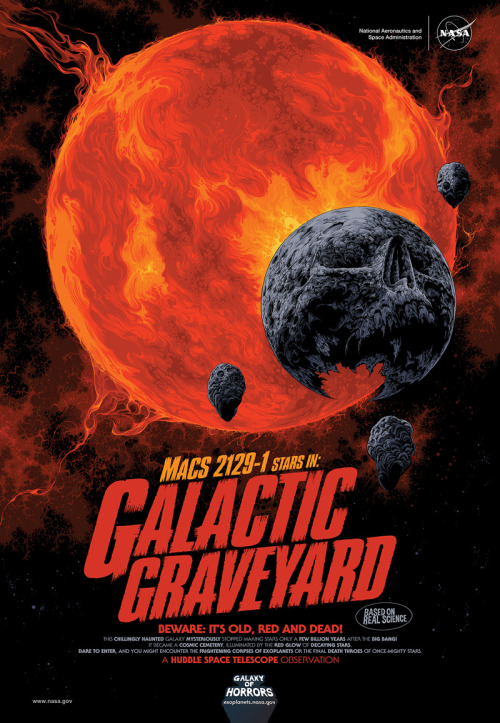
This chillingly haunted galaxy mysteriously stopped making stars only a few billion years after the Big Bang! It became a cosmic cemetery, illuminated by the red glow of decaying stars. Dare to enter, and you might encounter the frightening corpses of exoplanets or the final death throes of once-mighty stars.

Something strange and mysterious creeps throughout the cosmos. Scientists call it dark matter. It is scattered in an intricate web that forms the skeleton of our universe. Dark matter is invisible, only revealing its presence by pushing and pulling on objects we can see. NASA’s Roman Space Telescope will investigate its secrets. What will be revealed?
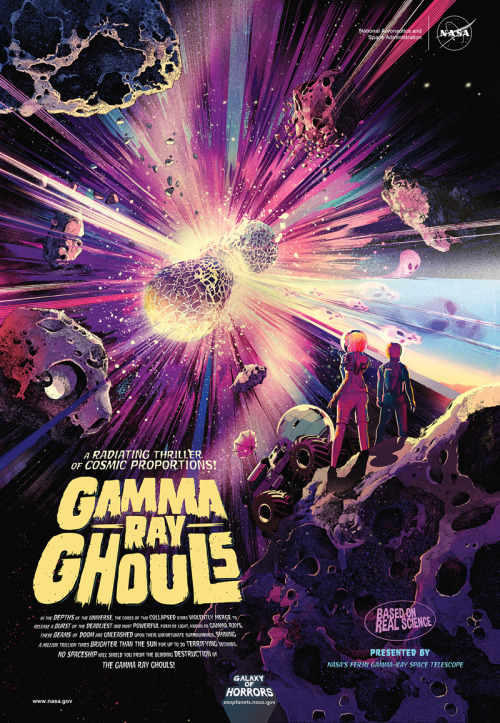
In the depths of the universe, the cores of two collapsed stars violently merge to release a burst of the deadliest and most powerful form of light, known as gamma rays. These beams of doom are unleashed upon their unfortunate surroundings, shining a million trillion times brighter than the Sun for up to 30 terrifying seconds. No spaceship will shield you from the blinding destruction of the gamma ray ghouls!
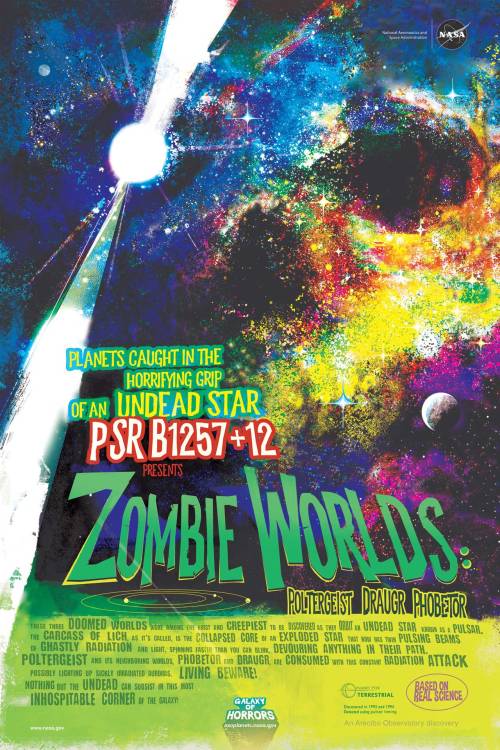
These doomed worlds were among the first and creepiest to be discovered as they orbit an undead star known as a pulsar. Pulsar planets like Poltergeist and its neighboring worlds, Phobetor and Draugr, are consumed with constant radiation from the star’s core. Nothing but the undead can subsist in this most inhospitable corner of the galaxy.
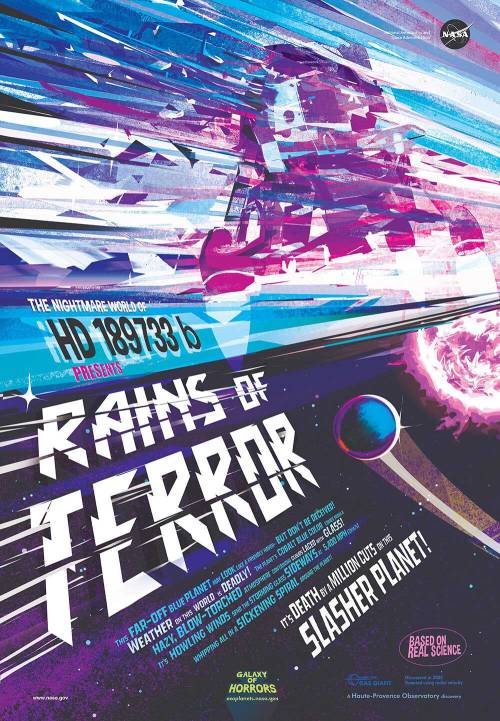
This far-off blue planet may look like a friendly haven – but don’t be deceived! Weather here is deadly. The planet’s cobalt blue color comes from a hazy, blow-torched atmosphere containing clouds laced with glass. Howling winds send the storming glass sideways at 5,400 mph (2km/s), whipping all in a sickening spiral. It’s death by a million cuts on this slasher planet!

shit man this got me emotional

Thousands of Stars in the Orion Nebula
Close inspection of the 2006 Hubble Space Telescope color mosaic of the Orion Nebula (M42) reveals numerous treasures that reside within the nearby, intense star- forming region. Southwest of the Trapezium stars located in the center of the nebula, a stunning Hubble Heritage portrait captures a variety of intricate objects. Deeply contrasting areas of light and dark blend with a palette of colors mix to form rich swirls and fluid motions that would make even the best artists stand back and admire their work.
Visible slightly bottom right center is the star LL Orionis (LL Ori), originally release by the Hubble Heritage Project in 2002. The delicate bow shock that surrounds LL Ori points towards the stream of gas flowing slowly away from the center of the Orion Nebula, near the Trapezium stars located off the image to the upper left. Close examination of the ends of the bow shock show secondary shocks that are formed as a two-sided jet of gas flowing away from this forming star at high velocity strikes the stream of low velocity gas from the center. To the right of LL Ori, a ghostly veil of material hangs thick and dark, obscuring portions of the nebula behind it.
Credit: NASA/Hubble

NGC 6514, Trifid’s Unicorn
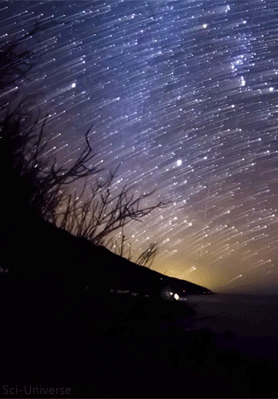

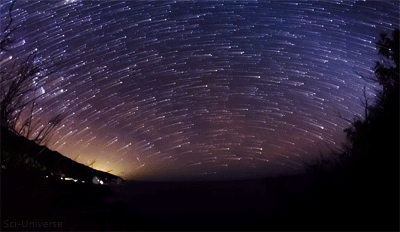
Geminid meteor shower of 2012, here’s the full video.
Hubble has discovered a dwarf star that devours its own solar system. It's like a cosmic cannibal

Astronomers used archival data from the Hubble Space Telescope and other observatories to analyze the spectral properties of the white dwarf star G238-44.
Detected elements show that the dead star swallows debris from both the inside and the outside of its system. It's a case of "cosmic cannibalism," say the study's authors, published on the Hubble Telescope website.
G238-44 was a Sun-like star that lost its outer layers and no longer burned fuel through nuclear fusion. The discovery that stellar debris simultaneously captures matter from its asteroid belt and Kuiper belt-like regions at the edge of the solar system, including ice bodies, is significant because it suggests that a "water tank" may be a common feature in outer areas. of planetary systems.
‼️When a star like the Sun expands and becomes a red giant, at the end of its life, it loses mass by releasing its outer layers.
➡️A consequence of this may be the gravitational scattering of small objects, such as asteroids, comets and satellites, to the large planets in the system. Hit in this way, surviving objects can be thrown into very eccentric orbits.‼️
☑️ "After the phase of the red giant, the remaining white dwarf star is compact - no bigger than Earth. The planets get very close to the star and experience strong forces of attraction that break them to pieces, creating a disk of gas and dust that eventually falls on the surface of the white dwarf star, "said Johnson.
Solar System 10 Things: Looking Back at Pluto
In July 2015, we saw Pluto up close for the first time and—after three years of intense study—the surprises keep coming. “It’s clear,” says Jeffery Moore, New Horizons’ geology team lead, “Pluto is one of the most amazing and complex objects in our solar system.”
1. An Improving View

These are combined observations of Pluto over the course of several decades. The first frame is a digital zoom-in on Pluto as it appeared upon its discovery by Clyde Tombaugh in 1930. More frames show of Pluto as seen by the Hubble Space Telescope. The final sequence zooms in to a close-up frame of Pluto taken by our New Horizons spacecraft on July 14, 2015.
2. The Heart

Pluto’s surface sports a remarkable range of subtle colors are enhanced in this view to a rainbow of pale blues, yellows, oranges, and deep reds. Many landforms have their own distinct colors, telling a complex geological and climatological story that scientists have only just begun to decode. The image resolves details and colors on scales as small as 0.8 miles (1.3 kilometers). Zoom in on the full resolution image on a larger screen to fully appreciate the complexity of Pluto’s surface features.
3. The Smiles

July 14, 2015: New Horizons team members Cristina Dalle Ore, Alissa Earle and Rick Binzel react to seeing the spacecraft’s last and sharpest image of Pluto before closest approach.
4. Majestic Mountains

Just 15 minutes after its closest approach to Pluto, the New Horizons spacecraft captured this near-sunset view of the rugged, icy mountains and flat ice plains extending to Pluto’s horizon. The backlighting highlights more than a dozen layers of haze in Pluto’s tenuous atmosphere. The image was taken from a distance of 11,000 miles (18,000 kilometers) to Pluto; the scene is 780 miles (1,250 kilometers) wide.
5. Icy Dunes

Found near the mountains that encircle Pluto’s Sputnik Planitia plain, newly discovered ridges appear to have formed out of particles of methane ice as small as grains of sand, arranged into dunes by wind from the nearby mountains.
6. Glacial Plains

The vast nitrogen ice plains of Pluto’s Sputnik Planitia – the western half of Pluto’s “heart”—continue to give up secrets. Scientists processed images of Sputnik Planitia to bring out intricate, never-before-seen patterns in the surface textures of these glacial plains.
7. Colorful and Violent Charon

High resolution images of Pluto’s largest moon, Charon, show a surprisingly complex and violent history. Scientists expected Charon to be a monotonous, crater-battered world; instead, they found a landscape covered with mountains, canyons, landslides, surface-color variations and more.
8. Ice Volcanoes

One of two potential cryovolcanoes spotted on the surface of Pluto by the New Horizons spacecraft. This feature, known as Wright Mons, was informally named by the New Horizons team in honor of the Wright brothers. At about 90 miles (150 kilometers) across and 2.5 miles (4 kilometers) high, this feature is enormous. If it is in fact an ice volcano, as suspected, it would be the largest such feature discovered in the outer solar system.
9. Blue Rays

Pluto’s receding crescent as seen by New Horizons at a distance of 120,000 miles (200,000 kilometers). Scientists believe the spectacular blue haze is a photochemical smog resulting from the action of sunlight on methane and other molecules in Pluto’s atmosphere. These hydrocarbons accumulate into small haze particles, which scatter blue sunlight—the same process that can make haze appear bluish on Earth.
10. Encore

On Jan. 1, 2019, New Horizons will fly past a small Kuiper Belt Object named MU69 (nicknamed Ultima Thule)—a billion miles (1.5 billion kilometers) beyond Pluto and more than four billion miles (6.5 billion kilometers) from Earth. It will be the most distant encounter of an object in history—so far—and the second time New Horizons has revealed never-before-seen landscapes.
Make sure to follow us on Tumblr for your regular dose of space: http://nasa.tumblr.com.
-
 ennev liked this · 9 years ago
ennev liked this · 9 years ago -
 abovelucky liked this · 9 years ago
abovelucky liked this · 9 years ago -
 fuckkaitlyn reblogged this · 9 years ago
fuckkaitlyn reblogged this · 9 years ago -
 goddess-of-sweatpantss reblogged this · 9 years ago
goddess-of-sweatpantss reblogged this · 9 years ago -
 mini-space-alien-blog reblogged this · 9 years ago
mini-space-alien-blog reblogged this · 9 years ago -
 hurtsettefromgallifrey reblogged this · 9 years ago
hurtsettefromgallifrey reblogged this · 9 years ago -
 ghoulish-n-foolish liked this · 10 years ago
ghoulish-n-foolish liked this · 10 years ago -
 thissometimepoet liked this · 10 years ago
thissometimepoet liked this · 10 years ago -
 mysticalstreamsalutations reblogged this · 10 years ago
mysticalstreamsalutations reblogged this · 10 years ago -
 mysticalstreamsalutations liked this · 10 years ago
mysticalstreamsalutations liked this · 10 years ago -
 nightwolfcrew reblogged this · 10 years ago
nightwolfcrew reblogged this · 10 years ago -
 diabolicalillumination reblogged this · 10 years ago
diabolicalillumination reblogged this · 10 years ago -
 whitewolf121-blog liked this · 10 years ago
whitewolf121-blog liked this · 10 years ago -
 gintastik reblogged this · 10 years ago
gintastik reblogged this · 10 years ago -
 nosoundinspace reblogged this · 10 years ago
nosoundinspace reblogged this · 10 years ago -
 venearla liked this · 10 years ago
venearla liked this · 10 years ago -
 raine-girl-love reblogged this · 10 years ago
raine-girl-love reblogged this · 10 years ago -
 raine-girl-love liked this · 10 years ago
raine-girl-love liked this · 10 years ago -
 2-boddah liked this · 10 years ago
2-boddah liked this · 10 years ago -
 vaalentinavs liked this · 10 years ago
vaalentinavs liked this · 10 years ago -
 the-steampunk-writer liked this · 10 years ago
the-steampunk-writer liked this · 10 years ago -
 garancelouison reblogged this · 10 years ago
garancelouison reblogged this · 10 years ago -
 garancelouison liked this · 10 years ago
garancelouison liked this · 10 years ago -
 icgreen33 reblogged this · 10 years ago
icgreen33 reblogged this · 10 years ago -
 icgreen33 liked this · 10 years ago
icgreen33 liked this · 10 years ago -
 quantums0ul liked this · 10 years ago
quantums0ul liked this · 10 years ago -
 arekuzanra liked this · 10 years ago
arekuzanra liked this · 10 years ago -
 fanyvandoom reblogged this · 10 years ago
fanyvandoom reblogged this · 10 years ago -
 fanyvandoom liked this · 10 years ago
fanyvandoom liked this · 10 years ago -
 ka-aal21 liked this · 10 years ago
ka-aal21 liked this · 10 years ago -
 clockworkpearlgirl liked this · 10 years ago
clockworkpearlgirl liked this · 10 years ago -
 lexistential liked this · 10 years ago
lexistential liked this · 10 years ago -
 kaleidoscopeeyes reblogged this · 10 years ago
kaleidoscopeeyes reblogged this · 10 years ago -
 robotsonmushrooms liked this · 10 years ago
robotsonmushrooms liked this · 10 years ago
Astronomy and the other wonders you witness when you look to the skies.
115 posts